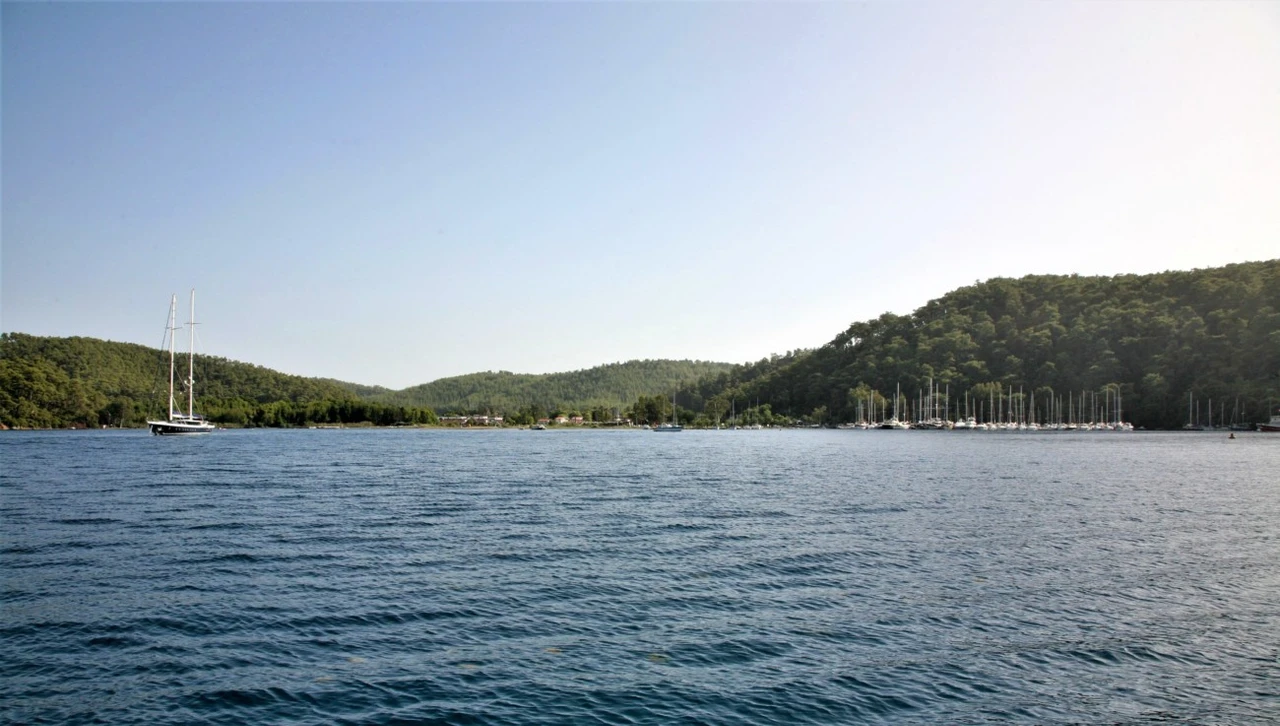Fear rises over controversial marina project in Türkiye’s Karacasogut Bay
 Karacasogut Bay in the Gulf of Gokova, Mugla, one of the most pristine and ecologically important bays in Türkiye. (Photo via Sail Parking)
Karacasogut Bay in the Gulf of Gokova, Mugla, one of the most pristine and ecologically important bays in Türkiye. (Photo via Sail Parking)
One of the most pristine and ecologically significant bays in Türkiye, Karacasogut in the Gulf of Gokova, Mugla, is facing what conservationists describe as an environmental nightmare. Plans are underway to construct a massive marina in the heart of this untouched paradise—despite years of legal battles, expert objections, and public outcry.
A jewel of nature and history
Karacasogut is located in a rare ecological and archaeological zone. One side of the bay features a freshwater fountain mentioned by Piri Reis over 500 years ago, still used by sailors today. On the opposite hillside lie the remains of the Carian settlement of Amnistos, along with relics of an ancient harbor at the shoreline—an area designated as a first-degree archaeological site.
Adding to its significance, Karacasogut sits at the very center of the Gokova Special Environmental Protection Area. The bay’s protected waters, sweetgum forests, and delta wetlands formed by a flowing stream make it a biodiversity hotspot. It is widely considered among the top five bays on the Mugla coastline that require the highest level of environmental protection.
Mega marina proposal resurfaces
Today, the bay hosts only three eco-friendly piers, one of which is managed by the government-backed Mucev. According to journalist and environmentalist Ali Boratav, the newly renamed Turkish Coastal Management and Environmental Protection Inc. (formerly MUCEV A.S.), under the Ministry of Environment, has been persistently pushing since 2020 to build a mega marina right next to the ancient harbor.
Numerous Environmental Impact Assessment (EIA) approvals have been annulled by courts, and multiple expert reports have harshly criticized the project. Yet, the agency has now submitted a new 1,446-page Project Introduction File (PTD) to the Ministry in March 2025, seeking approval once again.
Ignoring archaeology, dismissing the forest
The PTD meticulously catalogs species ranging from the white-striped bat and hoopoe to the yellow-necked forest mouse and the rare Mediterranean monk seal. It even references 70 years of flood data and traffic noise levels from 20 kilometers away. However, it fails to mention the semi-submerged Carian sarcophagus lid that lies directly within the planned marina basin.
The marina would extend dangerously close to the centuries-old forest, with only a vague mention in the PTD stating that the facility will be “at least 10 meters from the trees”—a remark quickly dismissed without further discussion.
From protected cove to fiberglass haven
Karacasogut is a nearly circular natural harbor 700 meters in diameter. The planned marina would protrude into the bay with a structure 220 meters long and 180 meters wide, housing yachts up to 50 meters in length. Plans include three 25-meter superyachts docking side-by-side at the main 180-meter pier.
According to Boratav, if this project is realized, the cove will no longer be a haven of green and blue—but a bay dominated by white fiberglass and towering yachts.
Beyond its ecological toll, Boratav highlights major technical and financial errors in the project’s planning documents.
Capacity increase massively understated
The PTD claims a modest 78% increase in yacht capacity—from 100 to 178 vessels. However, Boratav asserts that the actual pier and docking infrastructure will expand by 285.5% based on physical dimensions:
- Current pier: 284 meters
- Planned new piers and breakwaters: 811 meters
This discrepancy means that environmental impact calculations are significantly underestimated, misleading both public opinion and regulatory bodies.
A financial burden in the making?
Boratav further warns of flawed feasibility projections. In an era of economic crisis, the marina’s expected revenue is far too low to justify the environmental and financial costs. The project, he argues, may lead to public losses and create unfair financial advantages for certain operators.
Public pressure mounts
The Karacasogut marina project has been dubbed “a horror movie” by locals and conservationists. In an earlier article published on 22 October 2021, Boratav wrote that the project represented “the end of words” in terms of environmental, historical, and touristic destruction.
Five years and countless legal challenges later, critics say nothing has changed—except for the increasingly sophisticated and voluminous project files.



